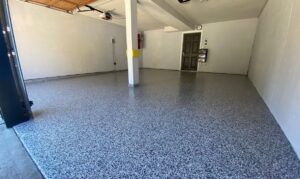 Polyaspartic flooring is a versatile, fast-drying floor coating. The polymer is a clear, almost odorless liquid that is spread with a roller or squeegee. Once it’s applied to the floor, it can dry in an hour or less. A second coat can be added for additional protection. If you wish to learn more about this, visit polyaspartic floor coating Gastonia
Polyaspartic flooring is a versatile, fast-drying floor coating. The polymer is a clear, almost odorless liquid that is spread with a roller or squeegee. Once it’s applied to the floor, it can dry in an hour or less. A second coat can be added for additional protection. If you wish to learn more about this, visit polyaspartic floor coating Gastonia
Polyaspartic floor coating has a high gloss finish, is durable and abrasion resistant, and can resist most chemicals. This is one of the reasons why it’s worth spending more money on the coating. It’s a superior choice for a variety of applications and outperforms other floor coating options.
Besides residential concrete floor coatings, polyaspartic coatings can also be used in industrial settings. They can be applied to industrial floors with significant traffic, and to commercial floors with high-traffic. However, polyaspartic floor coatings should not be applied to driveways or other exterior concrete surfaces.
Polyaspartic flooring is similar to polyurethane, but it can be more versatile. For example, polyaspartic has more flexibility and is more suited for industrial applications than traditional epoxy. It can also be applied to concrete countertops. It’s also more resistant to abrasion than epoxy.
Polyaspartic floors are durable and comfortable to walk on. They don’t crack or blister and offer a wide variety of colors. In addition, they’re environmentally friendly and U.V. stable, and installation can be done in just one day. They are great for basements, patios, and commercial spaces, and can even be used in interior rooms.
Polyaspartic floor coatings are an excellent choice for garage floors, as they are less susceptible to wear and tear than polyurethane and epoxy coatings. Unlike polyurethane and epoxy, polyaspartic can be applied year-round, which makes them a better option for garage floors. Polyaspartic floor coatings are available in a variety of thicknesses.
Polyaspartic coatings are easier to install and have fewer VOCs. Epoxies require 12 hours of cure before they’re ready for traffic, but polyaspartic floor coatings require only 24 hours. Moreover, polyaspartic flooring is more flexible and can be ten times stronger than epoxy. They also offer better UV resistance and are resistant to hot car tire marks.
Polyaspartic floor coatings are a popular option for home owners who want a durable and easy-to-maintain floor. Although they are slightly more expensive than epoxy, they have many advantages. First, they’re fast-curing, and have almost no odor. Another benefit is that polyaspartic floor coatings can last four times longer than epoxy.
A polyaspartic floor coating has excellent wetting characteristics, meaning it can penetrate into the concrete floor and form a durable bond. It also makes concrete floors more durable, and is able to withstand heavy loads. Polyaspartic floor coatings also have superior abrasion resistance and are suitable for wet environments.
Polyaspartic garage floor coatings are typically a little more expensive than epoxy flooring, but they can provide many advantages. They can be applied over loose tiles, but they must be prepped properly. The removal of mastics and carpet glue should be done before application. Typically, polyaspartic floor coatings need two or three coats to provide optimal performance.
If you want to protect your concrete flooring while adding a unique and customized finish, you should consider polyaspartic floor coating. This coating offers many benefits over epoxy flooring, including increased flexibility and impact resistance. It is also a great choice if you need to avoid damage to underlying concrete.
Contact Info
RW Custom Coatings 101 N. Yates St Gastonia
NC 28052 (839) 500-1777